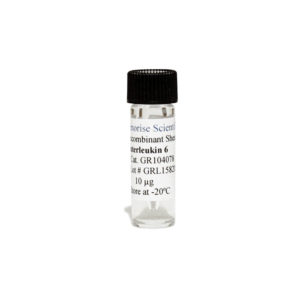Nori Equine Cathelicidin ELISA Kit
$508.00 – $916.00
This ELISA kit is for quantification of cathelicidin in horse. This is a quick ELISA assay that reduces time to 50% compared to the conventional method, and the entire assay only takes 3 hours. This assay employs the quantitative sandwich enzyme immunoassay technique and uses biotin-streptavidin chemistry to improve the performance of the assays. An antibody specific for cathelicidin has been pre-coated onto a microplate. Standards and samples are pipetted into the wells and any cathelicidin present is bound by the immobilized antibody. After washing away any unbound substances, a detection antibody specific for cathelicidin is added to the wells. Following wash to remove any unbound antibody reagent, a detection reagent is added. After intensive wash a substrate solution is added to the wells and color develops in proportion to the amount of cathelicidin bound in the initial step. The color development is stopped, and the intensity of the color is measured.
Alternative names for cathelicidin:
This product is for laboratory research use only not for diagnostic and therapeutic purposes or any other purposes.
- Description
- How Elisa Works
- Product Citation (0)
- Reviews (0)
Description
Nori Equine Cathelicidin ELISA Kit Summary
Alternative names for cathelicidin:
Alternative name for equine: Horse
| Assay Type | Solid Phase Sandwich ELISA |
| Format | 96-well Microplate or 96-Well Strip Microplate |
| Method of Detection | Colorimetric |
| Number of Targets Detected | 1 |
| Target Antigen Accession Number | na |
| Assay Length | 3 hours |
| Quantitative/Semiquantitative | Quantitative |
| Sample Type | Plasma, Serum, Cell Culture, Urine, Cell/Tissue Lysates, Synovial Fluid, BAL, |
| Recommended Sample Dilution (Plasma/Serum) | No dilution for sample <ULOQ; sufficient dilution for samples >ULOQ |
| Sensitivity | 30 pg/mL |
| Detection Range | 0.156-10 ng/mL |
| Specificity | Natural and recombinant equine cathelicidin |
| Cross-Reactivity | < 0.5% cross-reactivity observed with available related molecules, < 50% cross-species reactivity observed with species tested. |
| Interference | No significant interference observed with available related molecules |
| Storage/Stability | 4 ºC for up to 6 months |
| Usage | For Laboratory Research Use Only. Not for diagnostic or therapeutic use. |
| Additional Notes | The kit allows for use in multiple experiments. |
Standard Curve
Kit Components
1. Pre-coated 96-well Microplate
2. Biotinylated Detection Antibody
3. Streptavidin-HRP Conjugate
4. Lyophilized Standards
5. TMB One-Step Substrate
6. Stop Solution
7. 20 x PBS
8. Assay Buffer
Other Materials Required but not Provided:
1. Microplate Reader capable of measuring absorption at 450 nm
2. Log-log graph paper or computer and software for ELISA data analysis
3. Precision pipettes (1-1000 µl)
4. Multi-channel pipettes (300 µl)
5. Distilled or deionized water
Protocol Outline
1. Prepare all reagents, samples and standards as instructed in the datasheet.
2. Add 100 µl of Standard or samples to each well and incubate 1 h at RT.
3. Add 100 µl of Working Detection Antibody to each well and incubate 1 h at RT.
4. Add 100 µl of Working Streptavidin-HRP to each well and incubate 20 min at RT.
5. Add 100 µl of Substrate to each well and incubate 5-30 min at RT.
6. Add 50 µl of Stop Solution to each well and read at 450 nm immediately.
Background:
Cathelicidin is an antimicrobial peptides belonging to a family of polypeptides primarily stored in the lysosomes of macrophages and polymorphonuclear leukocytes. Cathelicidin is encoded by the gene CAMP, which is cleaved into the active form LL-37.[1][2] Cathelicidins serve a critical role in mammalian innate immune defense against invasive bacterial infection. Cathelicidins are expressed in various cells such as neutrophils and epithelial cells and macrophages after activation by bacteria, viruses, fungi, or the hormone 1,25-D, which is the hormonally active form of vitamin D.[3] ). Cathelicidin is cleaved into the antimicrobial peptide LL-37 by both kallikrein 5 and kallikrein 7 serine proteases. Excessive production of LL-37 is suspected to be a contributing cause in all subtypes of Rosacea.[2] Cathelicidin is activated when the disintegration (damaging and puncturing) of cell membranes of organisms occurs.[4] Cathelicidin rapidly destroys the lipoprotein membranes of microbes enveloped in phagosomes after fusion with lysosomes in macrophages. Patients with rosacea have elevated levels of cathelicidin and elevated levels of stratum corneum tryptic enzymes. Higher plasma levels of cathelicidin antimicrobial protein (hCAP18) appear to significantly reduce the risk of death from infection in dialysis patients. Patients with a high level of this protein were 3.7 times more likely to survive kidney dialysis for a year without a fatal infection.[4] The production of cathelicidin is up-regulated by Vitamin D.[5][6]
References
- Gombart AF, et al. (2005). FASEB Journal. 19 (9): 1067–77.
- Reinholz M, et al. (2012). Annals of Dermatology. 24 (2): 126–35.
- Liu PT, et al. (2006). Science. 311 (5768): 1770–3.
- Gombart AF, et al. (2009). Clinical Infectious Diseases. 48 (4): 418–24.
- Zasloff M (2002). Nature. 415 (6870): 389–95. doi:1038/415389a. PMID11807545.
- Kamen DL, Tangpricha V (2010). Journal of Molecular Medicine. 88 (5): 441–50.
Be the first to review “Nori Equine Cathelicidin ELISA Kit”
You must be logged in to post a review.





























Reviews
There are no reviews yet.